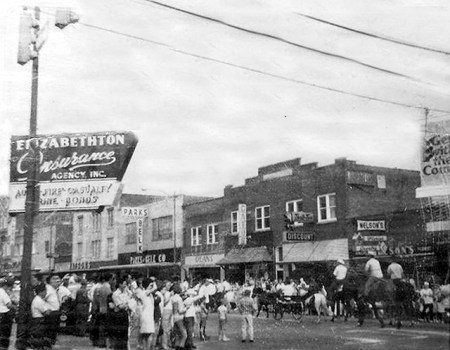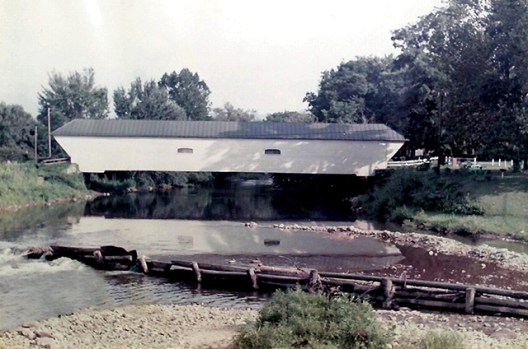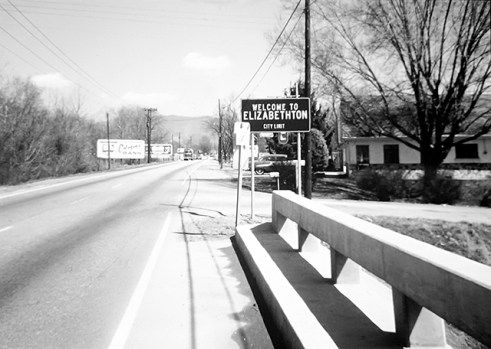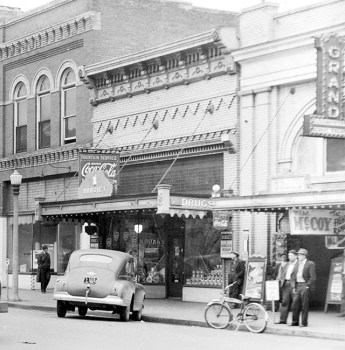Whispers of Elizabethton’s past: If buildings could talk
Published 4:15 pm Thursday, February 29, 2024
|
Getting your Trinity Audio player ready...
|
BY C.Y. Peters
Elizabethton, Tennessee, a quaint town with streets lined with stories chiseled into the bricks and mortar of its historic buildings. If only these structures could talk, they would weave a tapestry of tales spanning decades, from CB Johnson’s furniture store to the Lynnwood Hotel, each whispering secrets of the past.
The heart of downtown Elizabethton once thrived with furniture stores, where families browsed through the wares of CB Johnson’s to Heilig Meyers. Among the memories linger the echoes of the 1970s, where the air was filled with the fizzy excitement of little cokes from Ball Brothers. How many children left those stores with a complimentary drink, sipping sweetness as they explored the vibrant streets?
Venturing into the heart of the town, old pharmacies stood proud with their soda bars and eateries. The air was filled with the aroma of remedies and nostalgia. These pharmacies, now lost to time, could recount tales of lives intertwined with prescriptions and milkshakes, creating a symphony of clinking glasses and murmured conversations.
Barnes Boring, now a relic, could open its doors as a living museum. The shelves laden with 1800s supplies whisper stories of bygone eras. Visitors could touch the artifacts that once played a role in daily life, imagining a time when these goods were essential to survival in Elizabethton.
The bank buildings downtown silently observed the comings and goings of generations. If only those walls could share the stories of the dreams they safeguarded, the struggles they witnessed, and the triumphs they celebrated. Oh, the tales those vaults could spin about the trust bestowed upon them by the community.
The movie theaters, once vibrant hubs of entertainment, held secrets within their walls. The Ritz, Betsy, Capitol, and the Bonnie Kate could narrate the laughter, tears, and first dates that unfolded within their darkened halls. Each marquee, a storyteller of the town’s collective cinematic memories.
Barber shops stood as repositories of local lore, where patrons shared not only haircuts but also a mosaic of truths and lies. Famous pictures from photo studios encapsulated the essence of Elizabethton’s legends, capturing the faces and stories of those who shaped the town’s identity.
The covered bridge, a timeless witness to countless kisses and proposals, could unveil the tales of love that bloomed beneath its sturdy wooden frame. If only its timeworn planks could resonate with the laughter and promises exchanged by those who crossed its path.
Dino’s, Southern Restaurant, Hooks, Bus Station and the Sandwich Shop were not just eateries but chapters in the town’s culinary history. The tantalizing scents wafting through their doors held memories of shared meals and conversations that bound the community together.
The loan companies that once lined the blocks were more than financial institutions. They were enablers of dreams, assisting families in building homes or acquiring new cars and furniture. These buildings could tell tales of determination and hard work, of aspirations turned into reality.
The steps of the courthouse witnessed the ebb and flow of democracy, where citizens gathered to hear votes counted and meet their newly elected officials. Each election season carved into the very foundation of the courthouse, a testament to the town’s commitment to civic engagement.
At the edge of town, the Lynnwood Hotel stood as a beacon of prestige. If its walls could speak, they would resonate with the echoes of governors and presidents who once graced its corridors. Special guests from the 1920s and ’30s left their mark on this illustrious establishment, making it a cornerstone of Elizabethton’s history.
If only the buildings of downtown Elizabethton could talk, the symphony of their collective memories would tell the story of a town that thrived, endured, and evolved through the ages. As we walk its streets today, let us listen closely, for the whispers of the past still linger in the architectural embrace of these silent storytellers.
















